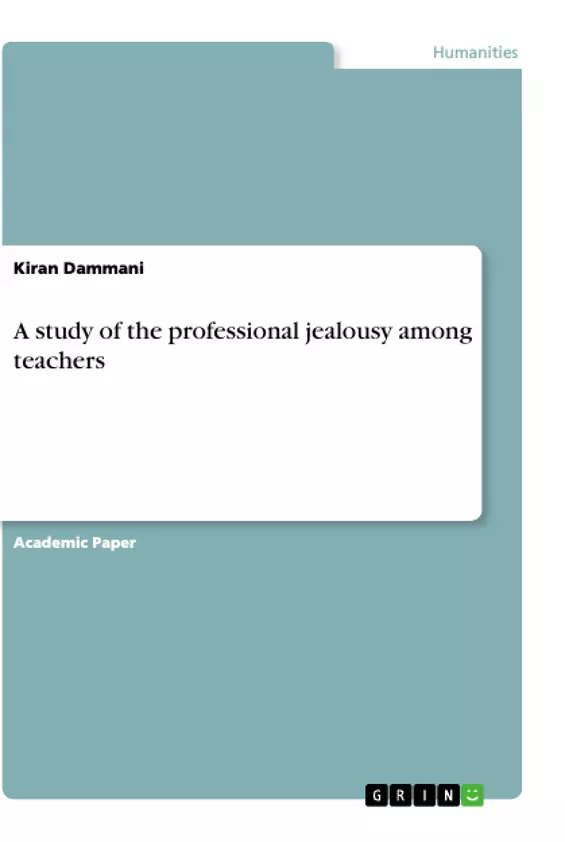In the present research study an attempt was made to understand the psychology of professional jealousy among the teachers. Jealousy is an emotion and typically refers to the negative thoughts and feelings of insecurity, fear, and anxiety over an anticipated loss of something that the person values, such as a relationship, friendship, or love. Research has identified a number of factors associated with jealousy. Although both women and men experience jealousy, there are differences in the ways they experience and react to it. Main objectives of the study were 1)To find out the teachers who have professional Jealousy.2)To find out the situations that generates the professional Jealousy. 3) To find out the causes of Jealousy. 4) To enlist the Symptoms of Jealous behavior of colleague.
Covert Participant observation method was used for the study. Jealousy was found to be more in the teachers who are ambitious, struggling high to achieve worthy position. Having average or below average level academic performance. Main causes of jealousy were found in the organization: When someone they hate succeeded, managed to get something and they thought that he didn't deserve it, achieved something that that had always wanted to achieve but didn't manage to get it. Lack of self confidence, Poor Self Concept, Fear Insecurity are the possible root causes for jealousy. The symptoms that indicates that colleague is jealous of you are: they avoid you, they spread rumours about you, they avoid making eye contact with you, not acknowledging your presence, not invited to social events.They don’t ever include you in their office humours Envy is a universal trait. However, if left unchecked in the workplace, it leads to problems..
Inhaltsverzeichnis (Table of Contents)
- Types of Jealousy
- Objectives of the Study
- Method
- Tools
- Academic performance
- Non Formal Interview
- Sample
- Findings and Discussion
- Conclusions
Zielsetzung und Themenschwerpunkte (Objectives and Key Themes)
This research study aims to understand the psychology of professional jealousy among teachers. The study investigates the factors that contribute to jealousy, the situations that trigger it, and the symptoms of jealous behavior among colleagues.
- Types of professional jealousy and their characteristics
- Situations that generate professional jealousy
- Causes of professional jealousy among teachers
- Symptoms of jealous behavior in the workplace
- The impact of professional jealousy on the workplace environment
Zusammenfassung der Kapitel (Chapter Summaries)
The study begins by exploring the different types of jealousy, distinguishing between normal and abnormal jealousy. It discusses the concept of delusional jealousy and examines the factors that contribute to different types of jealousy. The study then delves into the objectives of the research, outlining the key areas of investigation.
The research methodology is then presented, focusing on the covert participant observation method used in the study. The study also outlines the tools used to collect data, including academic performance records and non-formal interviews. The sample population is described, including the selection criteria, age range, and qualifications of the participants.
Schlüsselwörter (Keywords)
The primary keywords and focus topics of this research include professional jealousy, teacher psychology, workplace dynamics, covert participant observation, and the impact of jealousy on the academic environment. The study also examines factors such as academic performance, self-confidence, and self-concept in relation to professional jealousy.
- Citation du texte
- Kiran Dammani (Auteur), 2019, A study of the professional jealousy among teachers, Munich, GRIN Verlag, https://www.grin.com/document/499063



